15 Dog Fence Ideas For Your Escape Artist Buddy
Need to keep your dog safe and sound in your backyard or house? Want to prevent them from running away or digging up your garden? These 15 dog fence ideas - including GPS dog fences - were built for your peace of mind.
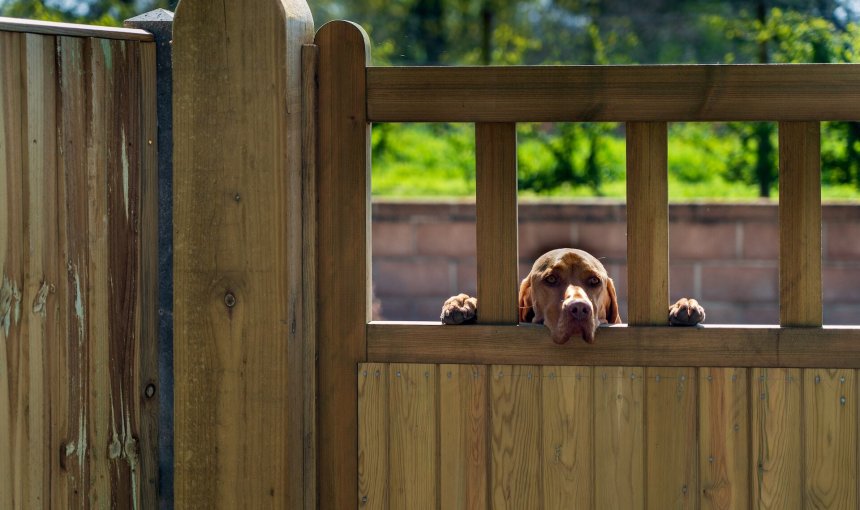
Got an escape artist dog at home? Or one who won’t stop digging up your vegetable garden? Here’s where a dog fence can come in handy. And when it comes to dog fence ideas, there are plenty of options out there – outdoor or indoor dog fences, big or small dog fences, permanent or temporary dog fences.
Or, of course, a 100% invisible GPS dog fence, which you can set up with your trusty Tractive device. Which, in the long run, saves you more time, effort, and money than setting up a physical fence – all for the price of a coffee and a cookie per month.
So which should you choose? What’s most affordable, and what’s most reliable? Which material is best? In this guide, we’ll cover everything you need to know about different dog fence ideas, including pros, cons, costs and tips. So you can choose the best solution for you and your furry pal(s).
- Which kind of fence is best for my dog?
- Factors to consider when choosing a dog fence
- Why do you want to build a fence in the first place?
- 15 outdoor dog fence ideas
- What type of fence is cheapest for dogs?
- How to keep a dog from digging under fence
- How to keep your dog from jumping a fence
Which kind of fence is best for my dog?
When it comes to finding the right fence for your dog, there are many options. But like with everything, you get what you pay for with dog fences. And just for reference: the average outdoor fence may cost you anything between $1600-7000 to set up – and ongoing costs for maintenance over time.1
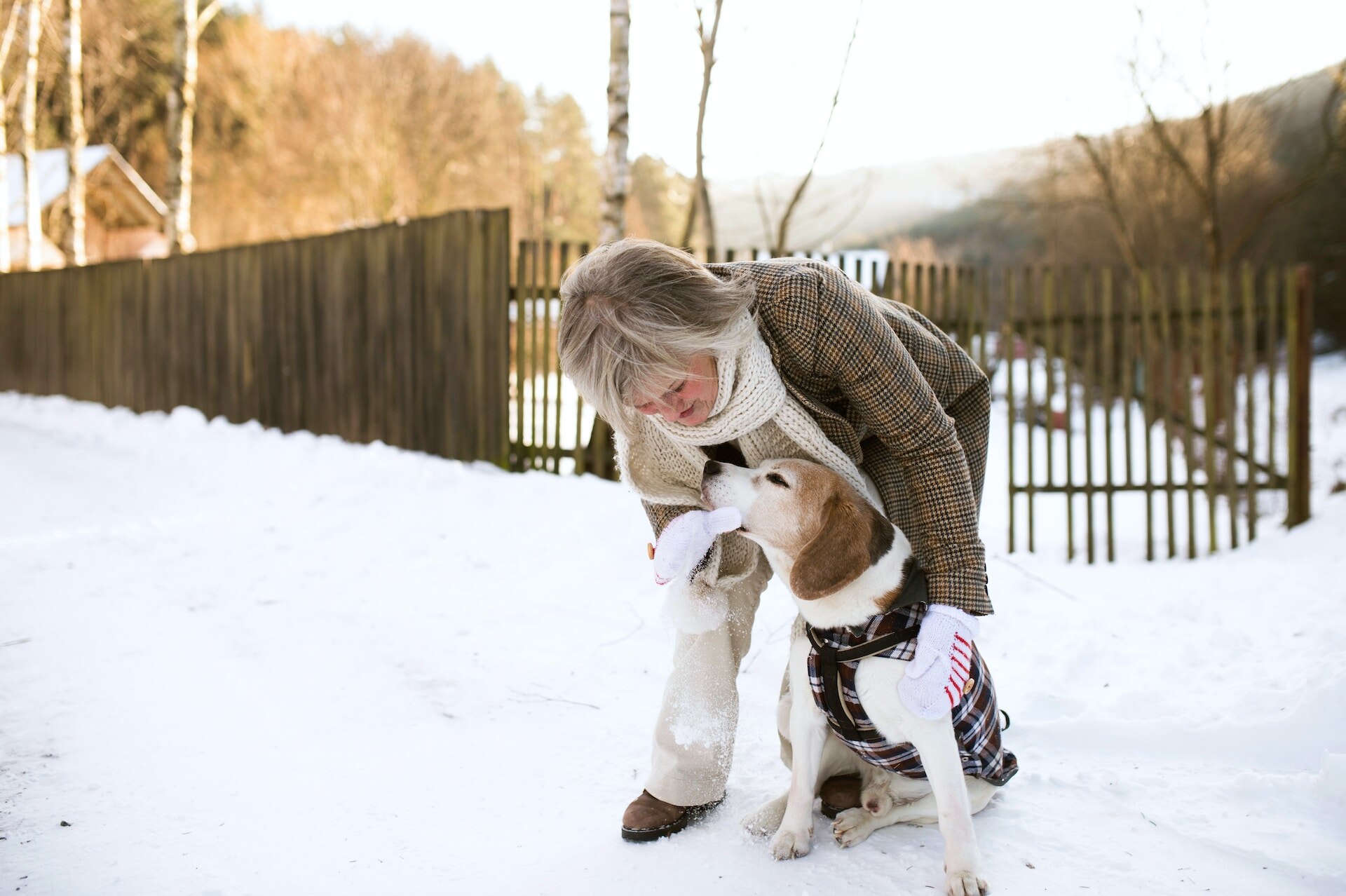
But beyond price, there are many other factors. Here are a couple of general dog fence ideas to get you started:
- You could go with so-called temporary dog fences, or a permanent one.
- Then there’s the material. Some are made of organic stuff – like plants, wood, or stone – while some don’t even “physically” exist.
Nowadays, there are virtual smart dog fences that don’t take up any space and use GPS to tell you if your buddy wanders off too far. In fact, the Virtual Fence feature is a key reason why many pet parents rely on their Tractive GPS Dog Tracker.

Sound like a lot to think about? Worry not. We’ll go through each of the many dog fence ideas out there so you can choose the one that fits you.
But first, a quick list on what to keep in mind when deciding on a dog fence.
Factors to consider when choosing a dog fence
To choose the best fence for your dog, you need to consider several factors. Like:
- The purpose of the dog fence or what you want to achieve with it
- Your dog’s age, size, breed and activity level
- How high your dog can jump
- Whether or not your dog likes to dig
- Whether you want a ready-made fence, DIY dog fence, or one set up by experts
- Your price range – how much you are willing to spend for a dog fence
- How much space you want to have in and around the fence
- Whether it should it serve as a visual barrier or be see-through
- What neighborhood regulations you need to watch out for
For example, if your dog is hyperactive, an escape artist, or keeps running away, you’ll likely need a different fence than someone with a fearful dog who never leaves your side. And if you have a small dog, a small temporary fence may be good enough. (While big dogs would usually require bigger, taller fences.)
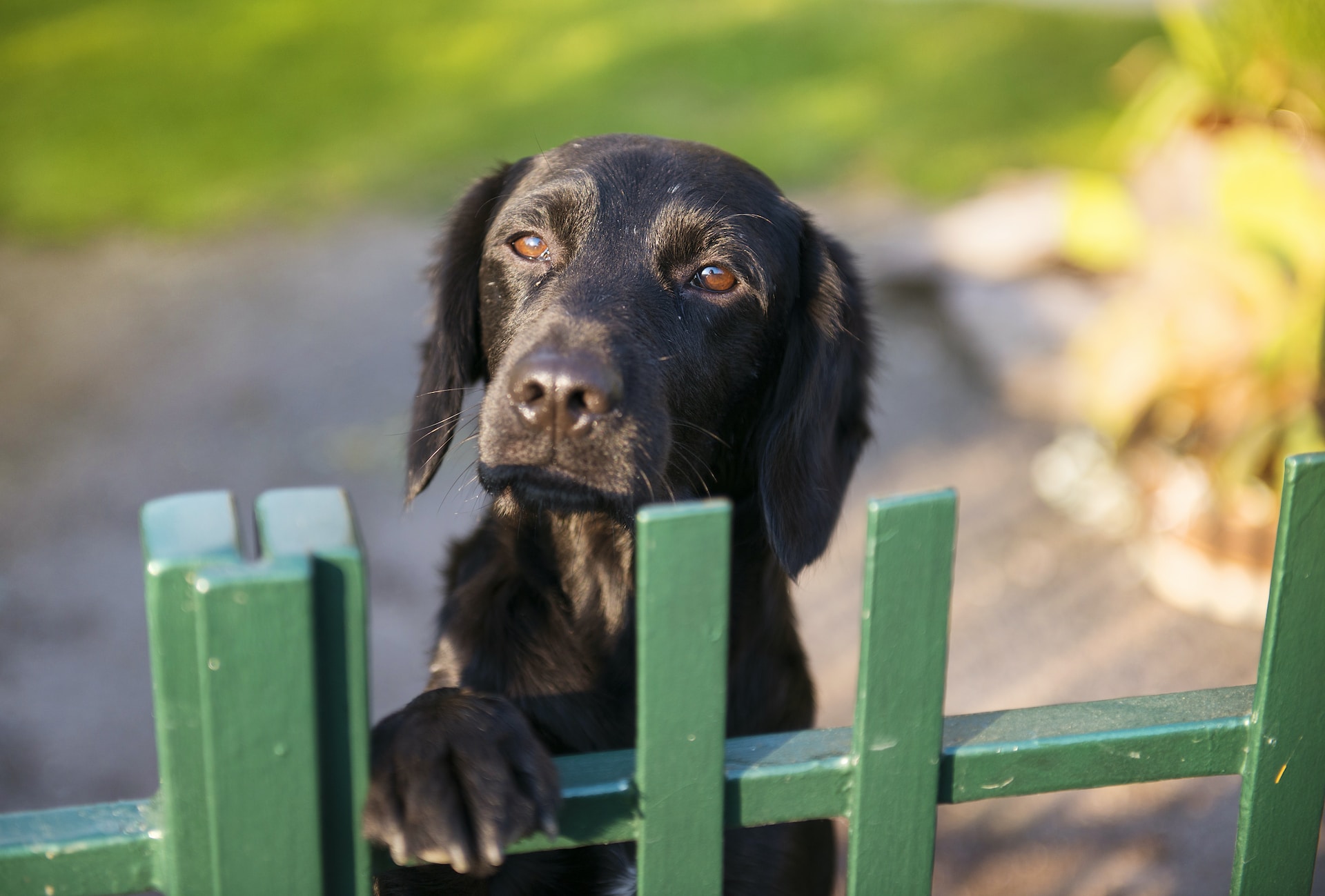
Why do you want to build a fence in the first place?
Before brainstorming dog fence ideas, it’s also a good idea to figure out why you need it. For example, a fence could help you to:
- Prevent your dog from running away
- Create a dog run aka designated play or exercise area just for your dog or new puppy
- Stop your dog from munching on your flowers or otherwise “creatively” destroying the garden (or those of your neighbors)
- Keep your dog in a safe zone when you’re busy elsewhere
- Help create an overall dog-friendly backyard
💡Want to keep your dog safe but don’t have ~$2000 at hand to build a fence? Track them in real-time over an unlimited range with a dog GPS tracker instead. (And pay less than your Netflix subscription per month.)
Once you know why you need it, here are a couple of dog fence ideas to get you started.
15 outdoor dog fence ideas
Wooden dog fence
Dog fence idea #1: a good old fashioned wooden dog fence. Wood fencing is a common option that many pet parents opt for. And here are a couple of its perks:
- a natural look – it won’t stick out like a sore thumb in your backyard
- it can be built in any size, depending on your needs
- it gives you a bit more privacy
But keep in mind that curious dogs might be disappointed when they can’t watch the neighborhood activity. So consider adding a doggie window for your wooden dog fence, which you can easily buy online. Or opt for a more minimalist wooden fence, like the one below:
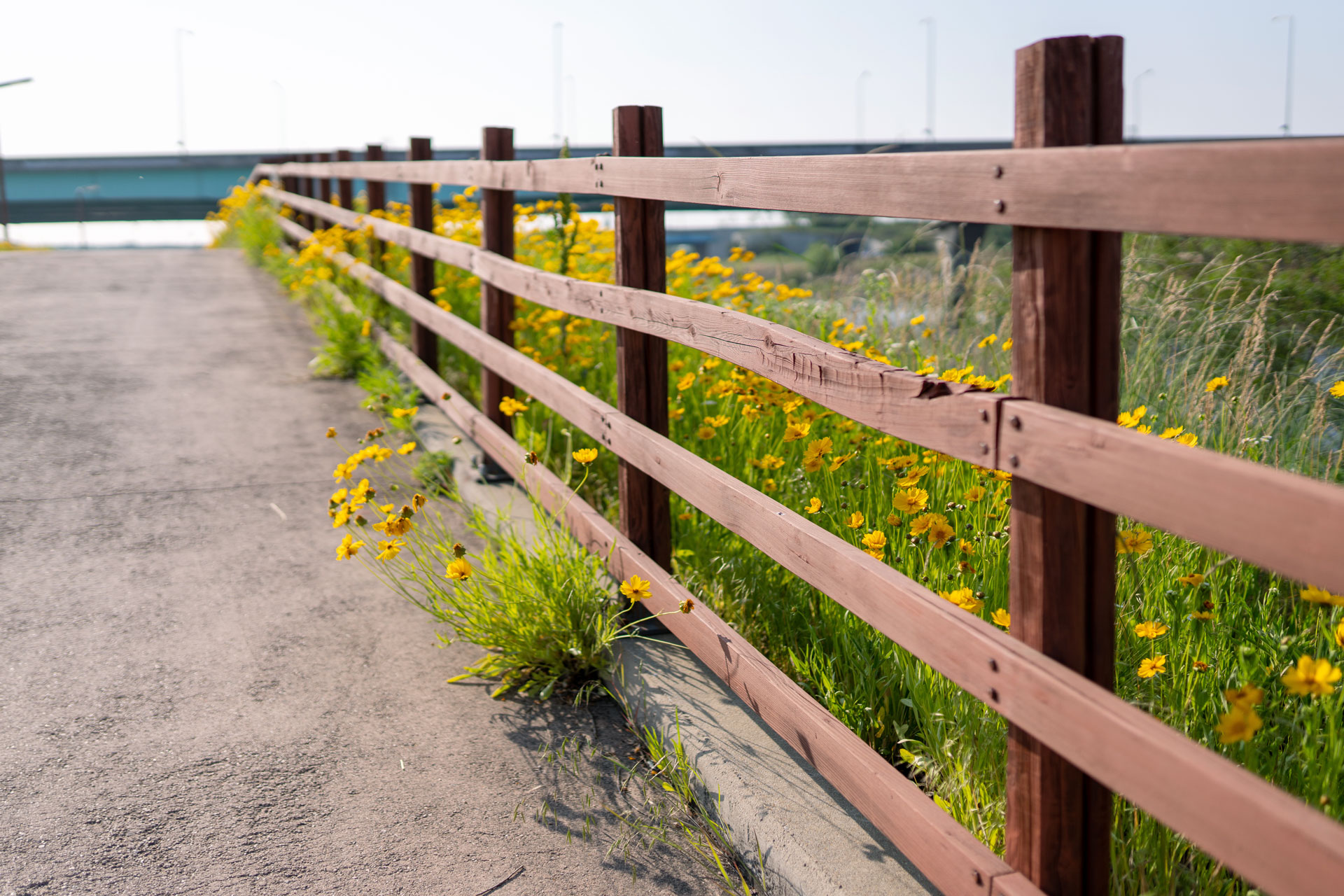
Here are several options for wooden dog fences:
Picket dog fence
A picket fence is a good option for keeping your dog in the yard if you want to keep your property pretty. Picket fences fit well to most homes, and don’t look like dog fences at all. Usually, picket fences are smaller than other types of fencing, and may be a good choice if you have a small dog who can’t jump very high.
But don’t forget – picket fences are not likely to give you a ton of privacy.
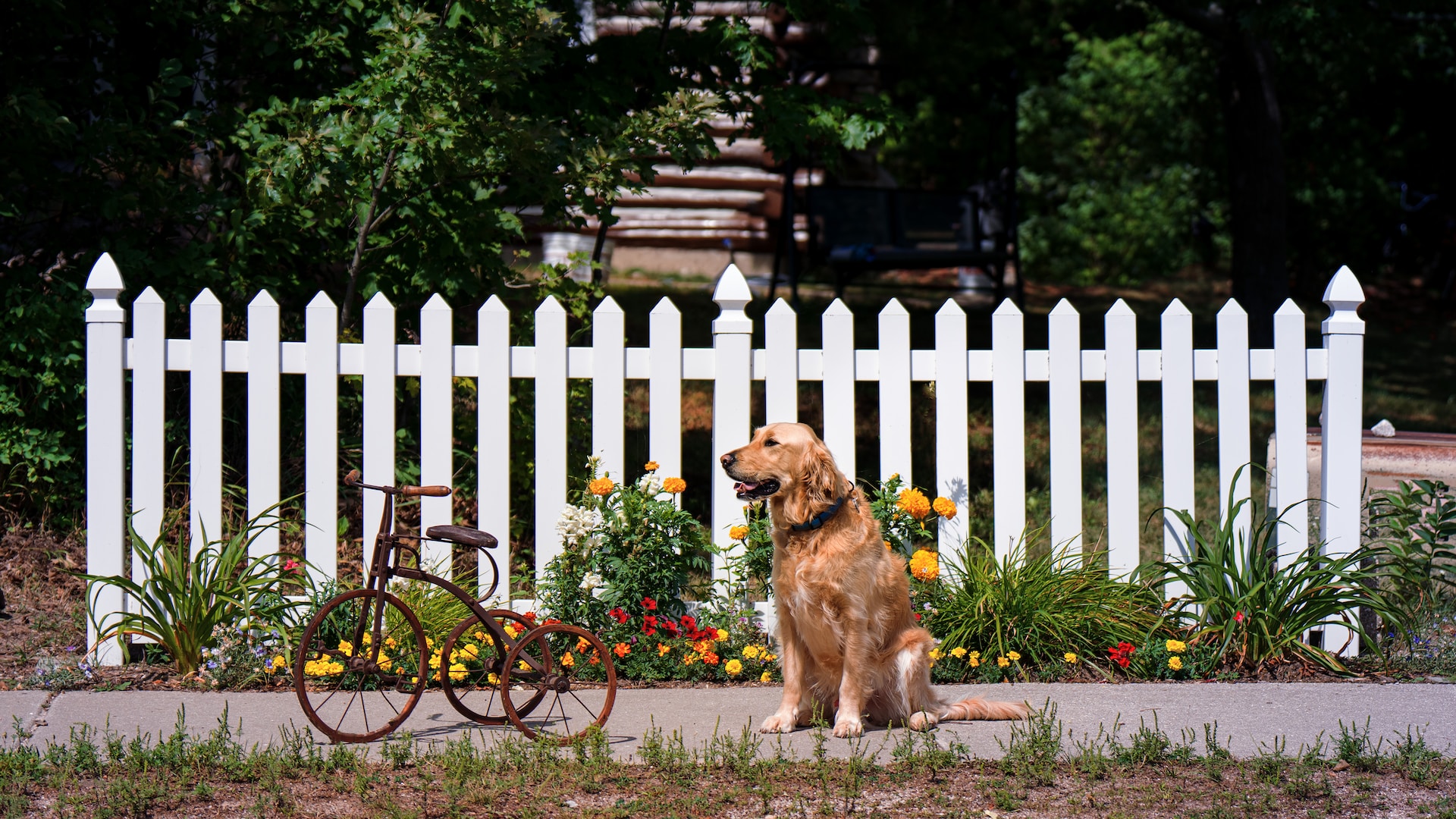
Split-rail fence
Split-rail fencing is another great minimalistic and natural wood fencing option. Also known as a log fence, zigzag, worm or snake fence, it’s a typical fence option in the US and Canada. (Where it’s traditionally made from timber logs.)
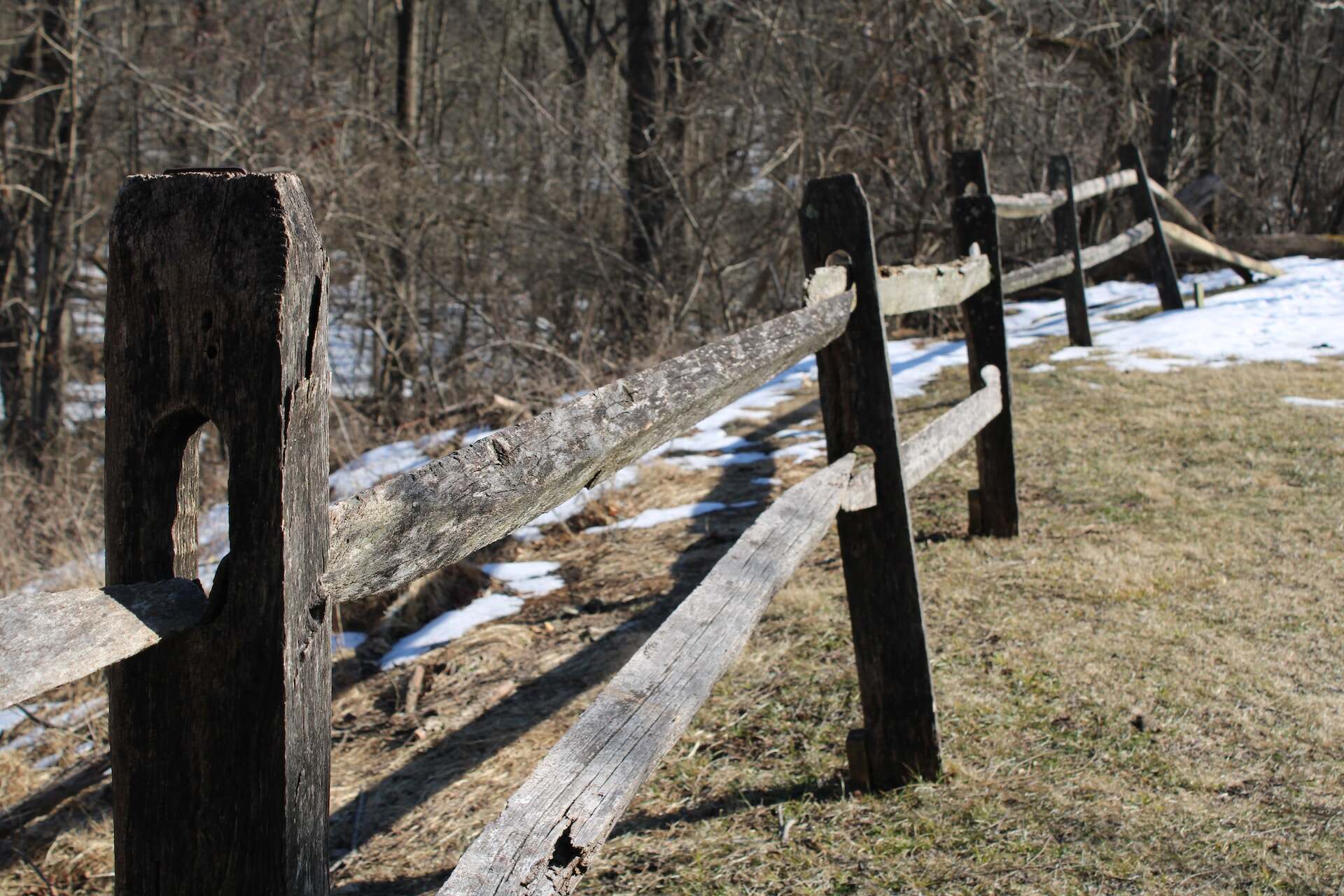
Since there are large gaps in the fence between the logs, make sure to reinforce any split-rail fencing with wire or another material to make sure it’s fully dog-proof. (Else your buddy might slip through them.)
DIY pallet dog fence
Love DIY projects? A pallet fence could be a good dog fence option for you. Considering you might even find old pallets for free, a cheap dog fence option too. Not to mention, it’s environmentally-friendly. You can customize and paint the pallet fence to your liking.
Pallets are ideal for protecting a flower bed… or your garden from your dog. Plus, a pallet fence can withstand cold and warm temperatures.
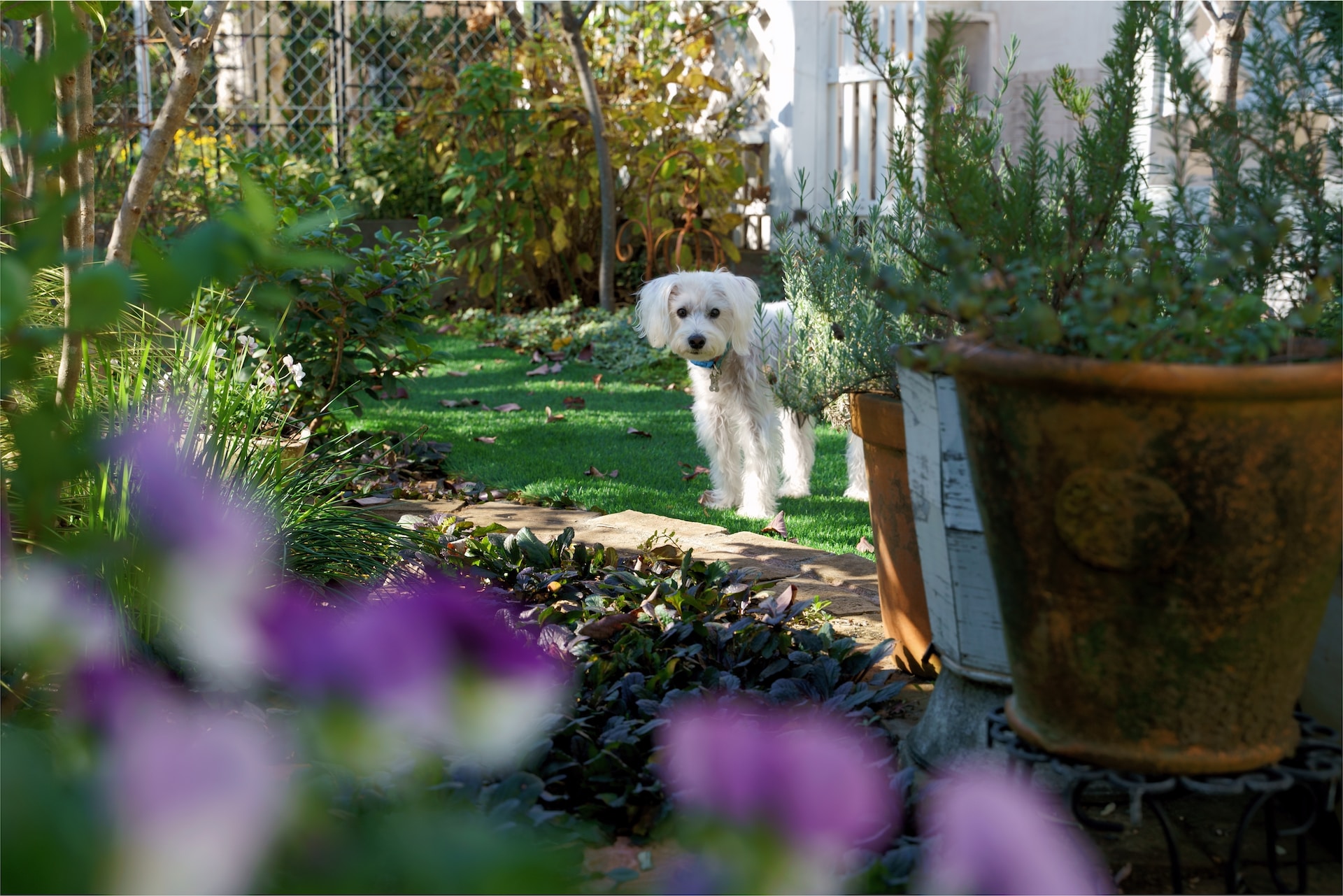
Just make sure that the fence is high enough, so that your dog can’t jump over it. Also, if necessary, you can buy prevention barriers to stop your dog from digging under the fence.
Read more: Dog Jumping Fence? How To Handle An Escape Artist Dog
Metal dog fence
Next on our dog fence ideas list: metal dog fences. Which can double up as a safe and secure option, since they’re more durable than wooden fences. Metal is affordable and comes in several different options:
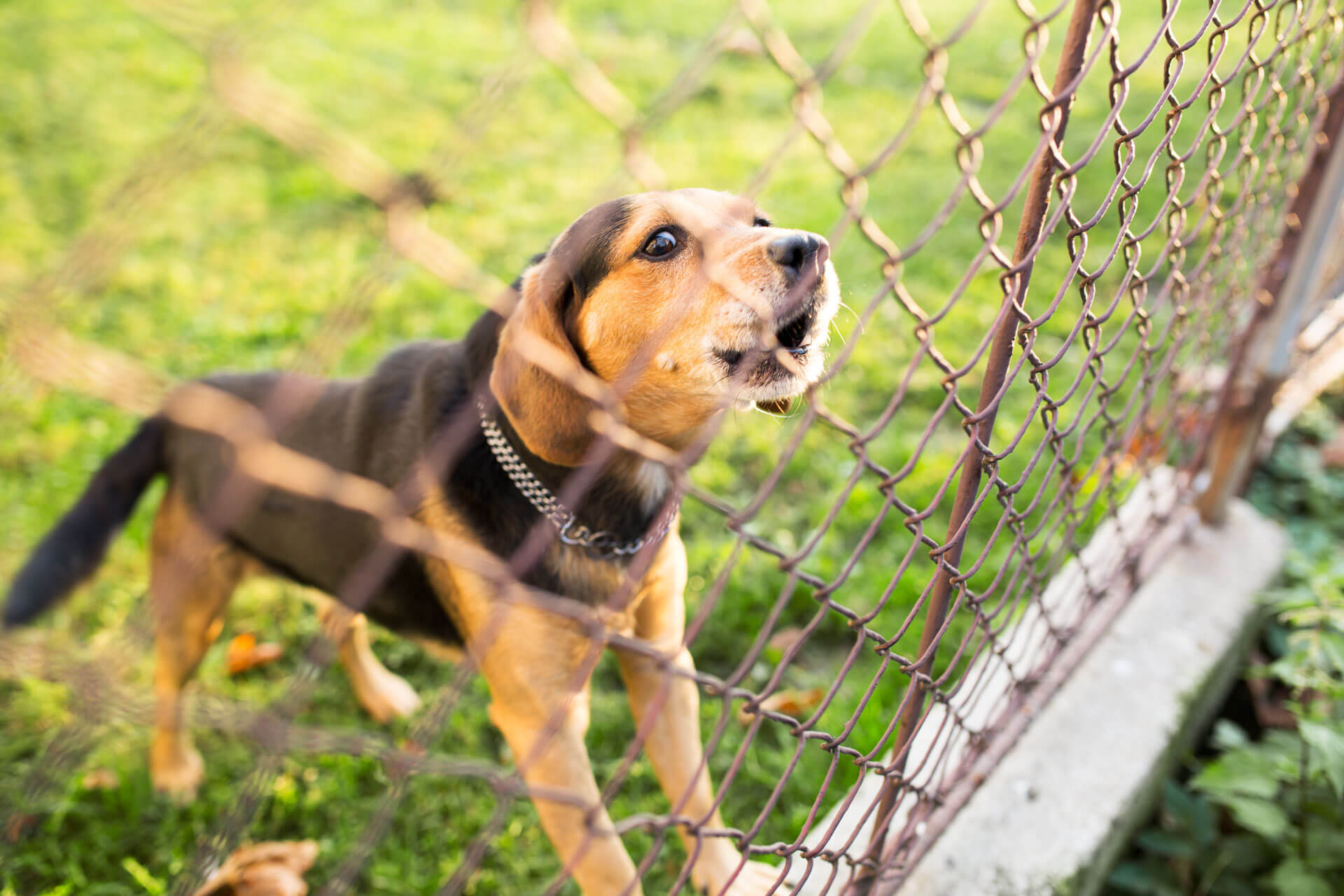
Chain link dog fence
A chain link fence is a popular choice among pet parents. Here are a couple of its perks:
- It’s affordable
- It’s durable and low-maintenance
- It’s quick and easy to fix
But most importantly: your dog can watch people passing by. Which can prevent them from getting bored, anxious, or stressed out from being cooped up indoors.
⚠️ A bored dog is more likely to run away for a bit of excitement or action. Make sure to keep yours busy and occupied with toys and playtime to prevent an escape attempt. Or for 100% peace of mind, follow their every step in real-time:
Wondering how to keep your dog from digging under a chain link fence? Use a material at the base of the fence that will discourage them from further digging. (For example, you can bury chicken wire or use large rocks or boulders to do so.)
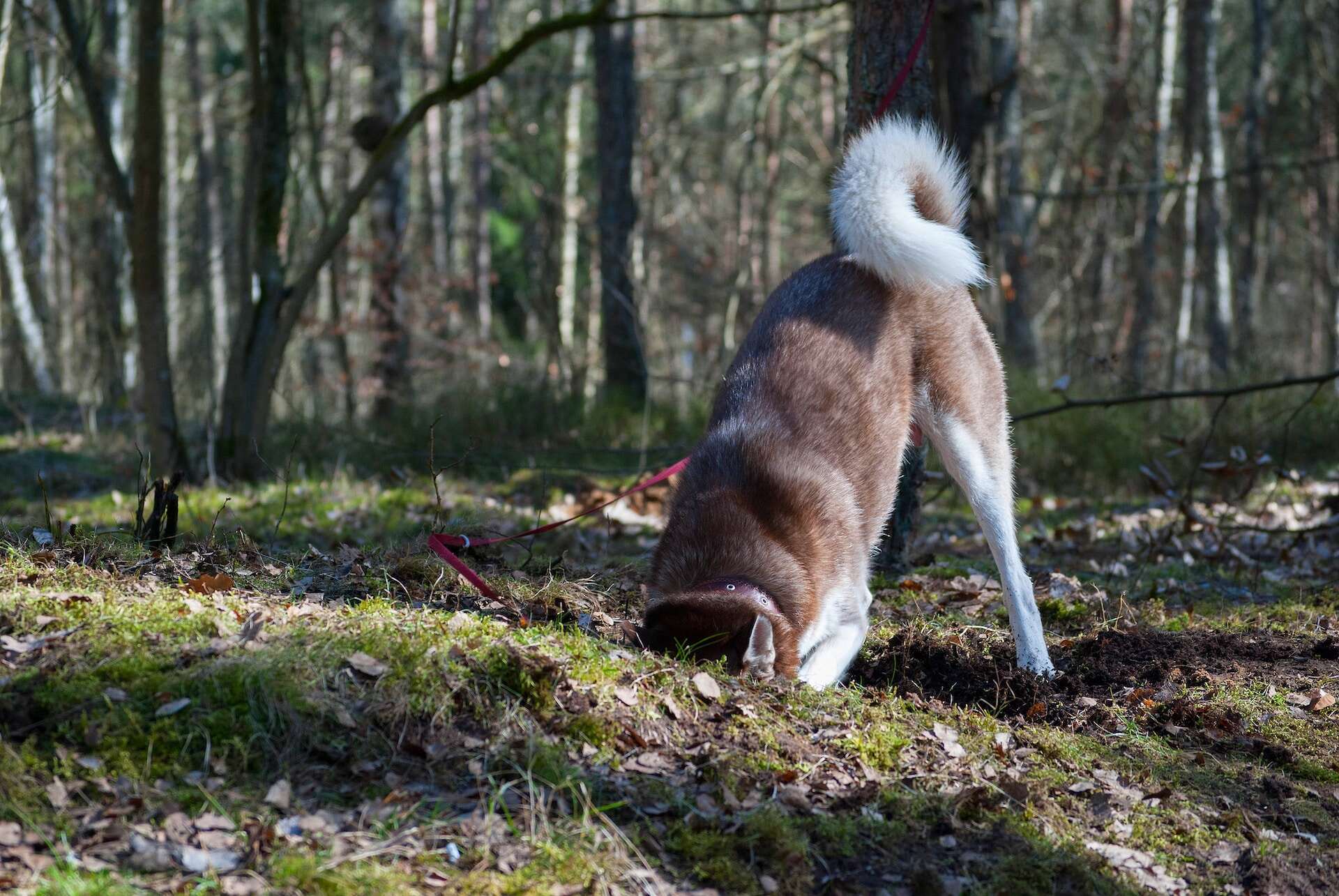
It’s also a good idea to monitor your dog in the backyard so that if they do start digging, you can intervene. Skip ahead for a couple of tips on how to prevent a dog digging under a fence.
Ornamental steel or aluminum dog fence
Many fence companies offer aluminum or steel ornamental fences, which are sturdy, heavy-duty, and an attractive option that still allow for some visibility. And the best part? If you install it correctly, it’s unlikely your dog will hope over it.
On the downside, ornamental steel fences can be quite pricey. But in the end, you’ll have have a more permanent solution.
Wire fence
With a more simple wire dog fence, you can get a quick, cheap, although less durable way of keeping your dog fenced in. And if you pick the right type of wire fence, it doesn’t have to look ugly in your backyard either.
- Chicken wire fence is one of the cheapest dog fence options out there
- Other options include hardware, cloth, or hog wire.
- Wire fencing is suitable for DIY backyard projects, or for small dog fences.
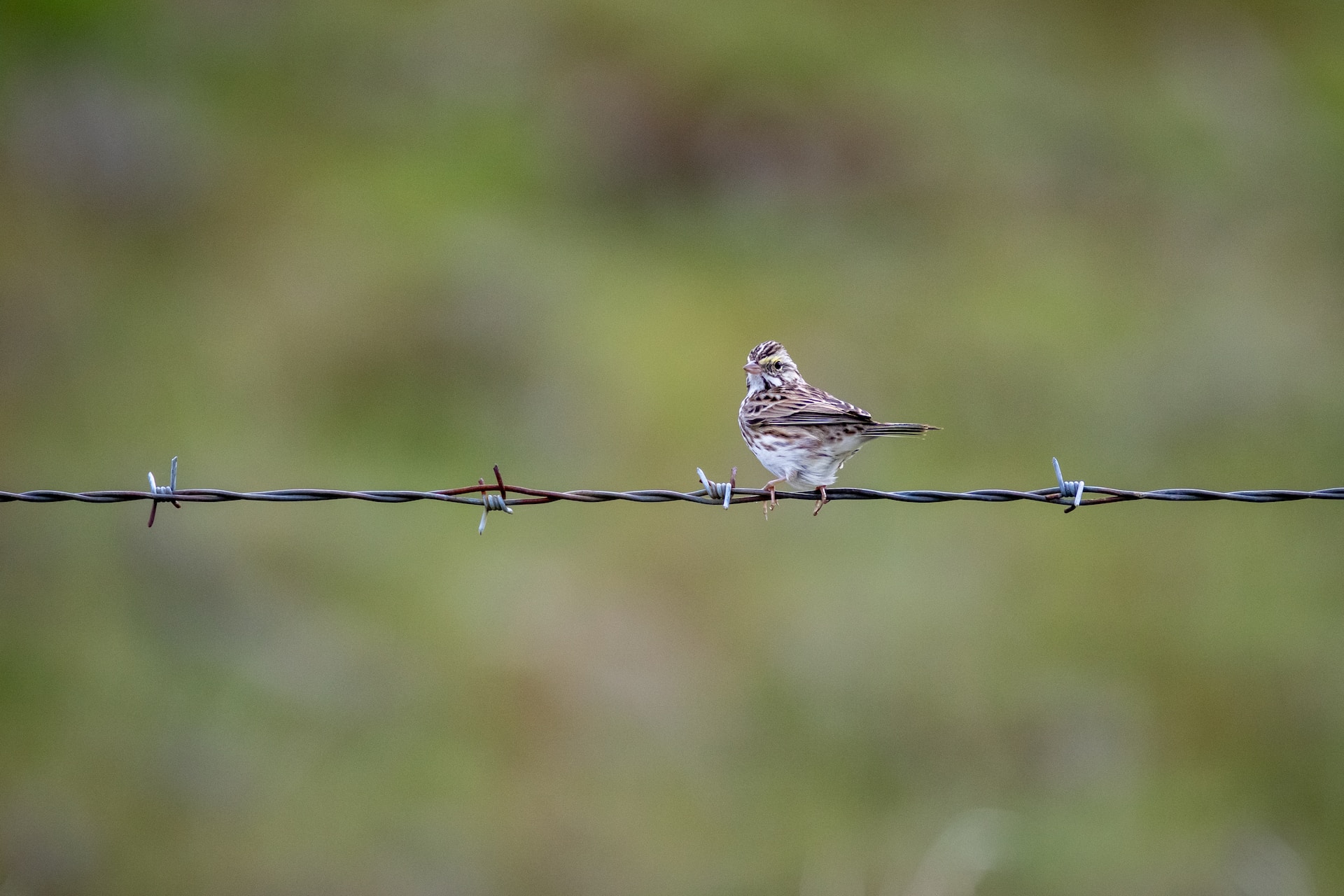
Wired electric underground dog fences are also an option, and they don’t create a visual or physical barrier in your yard. However, we’d recommend you avoid any that use static shocks which might cause your dog pain or stress them out unnecessarily.
💡GPS dog fences are 100% stress- and shock-free, take only around 5 minutes of setup time, and are much more affordable than all physical fences. So you can keep your dog safe without compromising on their love and trust for you.
Brick dog fence
For a (much more) permanent solution, a brick wall may be a good dog fence option. Brick is more expensive, but also a lot more durable. That means it can be quite cost-effective in the long run.
- A brick fence also needs little to no maintenance compared to a wooden fence.
- These are also ideal for large dogs due to their height, durability and stability.
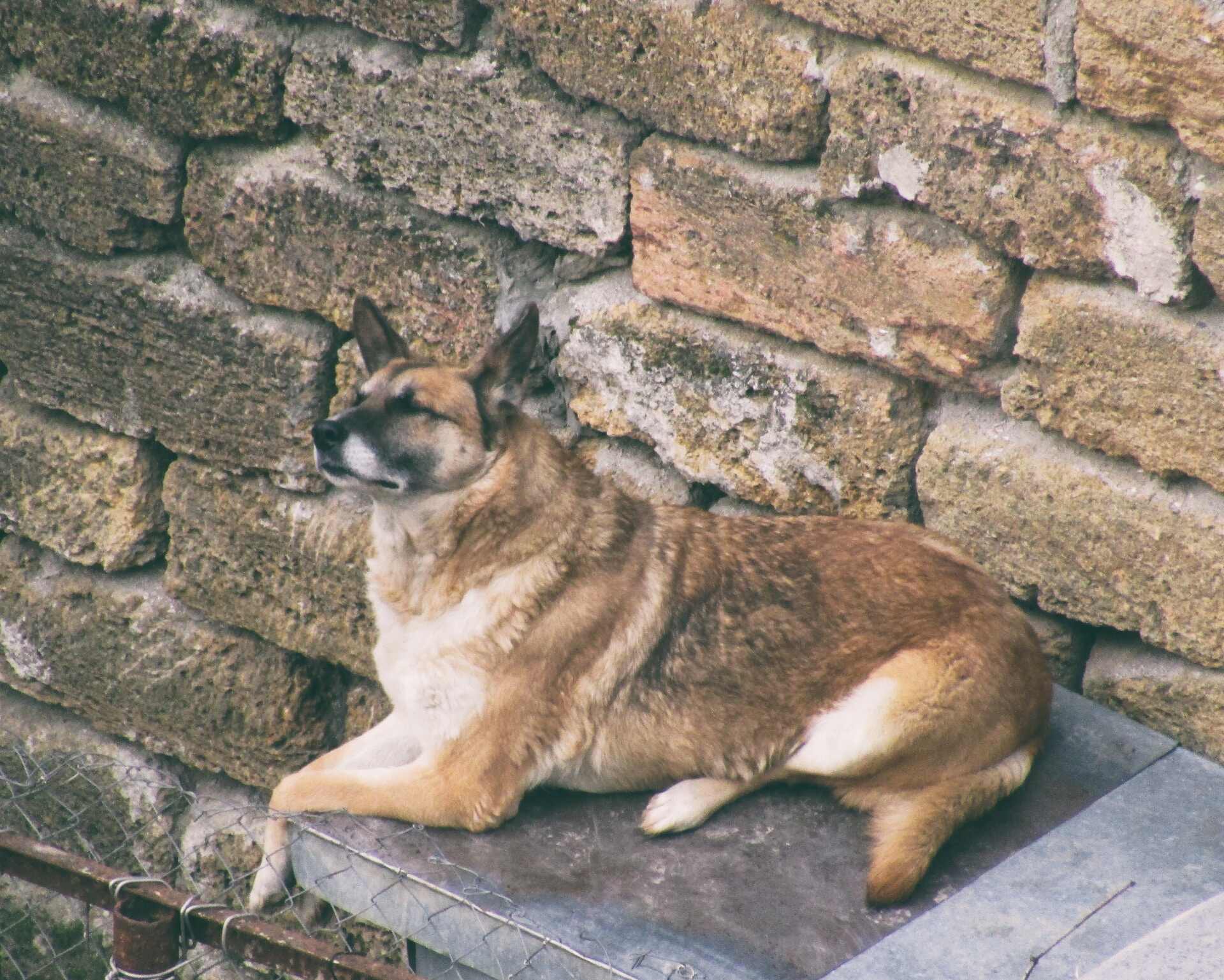
Stone dog fence
Similarly, a stone dog fence is a natural, sustainable option which you can build from local stones or boulders. Just make sure your dog can’t use the stones to make a run (or jump) for it and escape. Stone fences offer a permanent and low-maintenance solution.

Plastic dog fence
Next on our list of dog fence ideas? Ones made out of plastic. That includes temporary, portable dog fences and DIY plastic fences. You can buy a fence kit online, which includes all the parts you need for an easy-to-assemble dog fence.
Polypropylene plastic fencing is one such type of dog fence. High-quality, durable, and UV-light resistant, you can use it to set up a portable dog fence, or use it for a more permanent set up.
Though it makes sense to keep in mind: plastic is, naturally, a less sustainable material than wood, brick or stone. Good to keep in mind if you’re trying to do your bit to keep the planet in better shape!
⚠️ Just remember to take some extra steps to stop your dog from digging under, or chewing on this type of fence. If your dog chews off a bit of a plastic fence, it may cause a potentially fatal intestinal blockage. Get them to a vet immediately if you suspect they’ve swallowed a bit of plastic by mistake.2
Vinyl fencing
Vinyl fences are plastic-based, made from polyvinyl chloride (PVC). These provide a good alternative to wood or chain link fences, as they won’t crack, rot, or splinter and require less maintenance in the long term. Vinyl fencing:
- is easy to clean and low-maintenance
- won’t crack or rot
- can be made to look like wood
However, vinyl fencing has plenty of downsides too:
- the initial costs are high (in the US, the average cost for setting up a vinyl fence is about $3,6003)
- it’s made from synthetic, non-sustainable material
- it can be stained by algae, mildew, or mold
- it may be damaged by extreme weather
⚠️ Much like plastic fences, a vinyl fence might cause your dog to get sick if they chew off or swallow a part of it by mistake. Which doesn’t make it an ideal option, especially if you’re building a fence in the hopes of keeping your buddy safe.
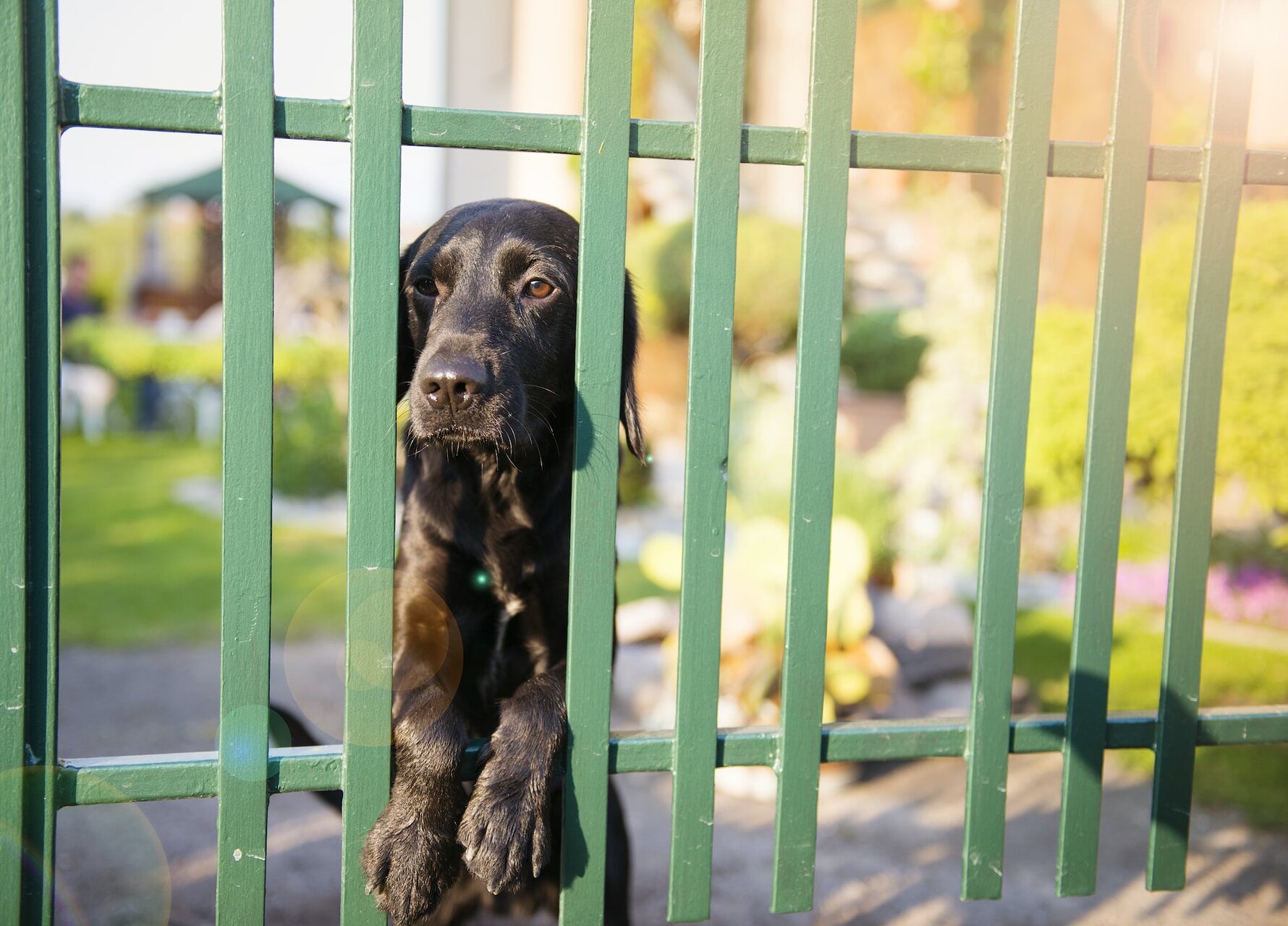
Invisible dog fence / electric dog fence
Invisible dog fences allow you to keep an open yard, all while keeping your dog contained. If your dog tries to leave the fence boundary, they will get a small electric shock. Over time, this is meant to train your dog to stay in the fenced area.
Of course, you can expect negative side effects with this approach, so be sure to read up on all the pros and cons of invisible dog fences beforehand.4 As for types, you can find two types of invisible dog fence – underground (wired) and wireless dog fences.
⚠️ Tractive does not recommend using electric dog fences or shock collars. They can cause physical and/or psychological harm to dogs, as they rely on negative reinforcement and painful punishments.
The shock your dog receives from an invisible dog fence may even encourage them to run away, if they associate the painful shock with your backyard2.
A safer, more humane alternative to an invisible fence is the Tractive GPS Dog Tracker, with it’s Virtual Fence feature.
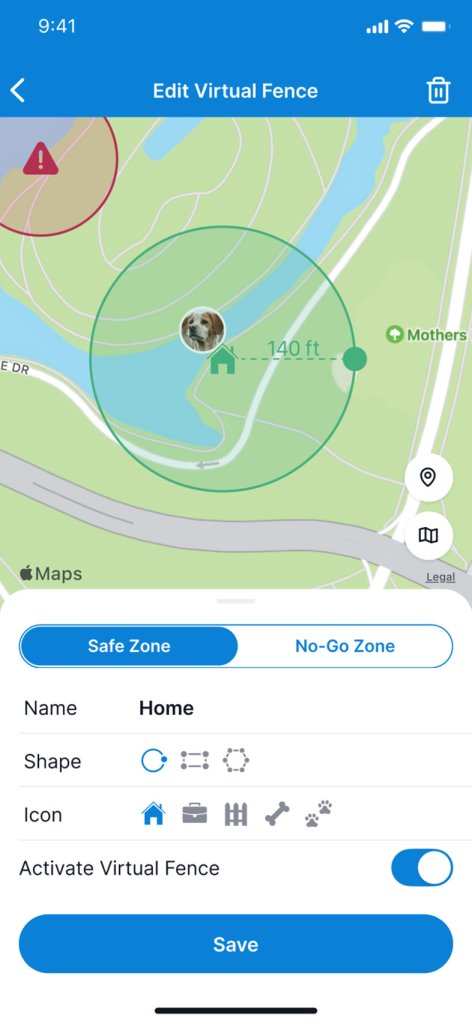

“A Virtual Fence is a continuously monitored area that you, the user, create. You can easily move or resize it while still sitting on your couch.
Once you’ve defined a specific area, your Tractive GPS starts monitoring it. As soon as your tracker picks up that your pet is outside a safe zone or inside a danger zone, the system immediately detects a change in the area it’s monitoring.
Which means you’ll get a notification right away – so you can intervene and prevent your pet from wandering too far.”
– Ivelin Nenkov, Embedded Systems Engineer at Tractive since 2016
Underground dog fence
With an underground dog fence, you use a buried wire and transmitter to send a radio signal through the wire, creating a boundary.
One of the biggest pros of this fence is that you can create a custom layout to suit your needs. They are also relatively cheap and easy to install, and you won’t have a problem with digging or an unsightly physical fence or visual barrier.
But remember that an underground dog fence is a shock fence, which is not likely to be pleasant for your buddy.
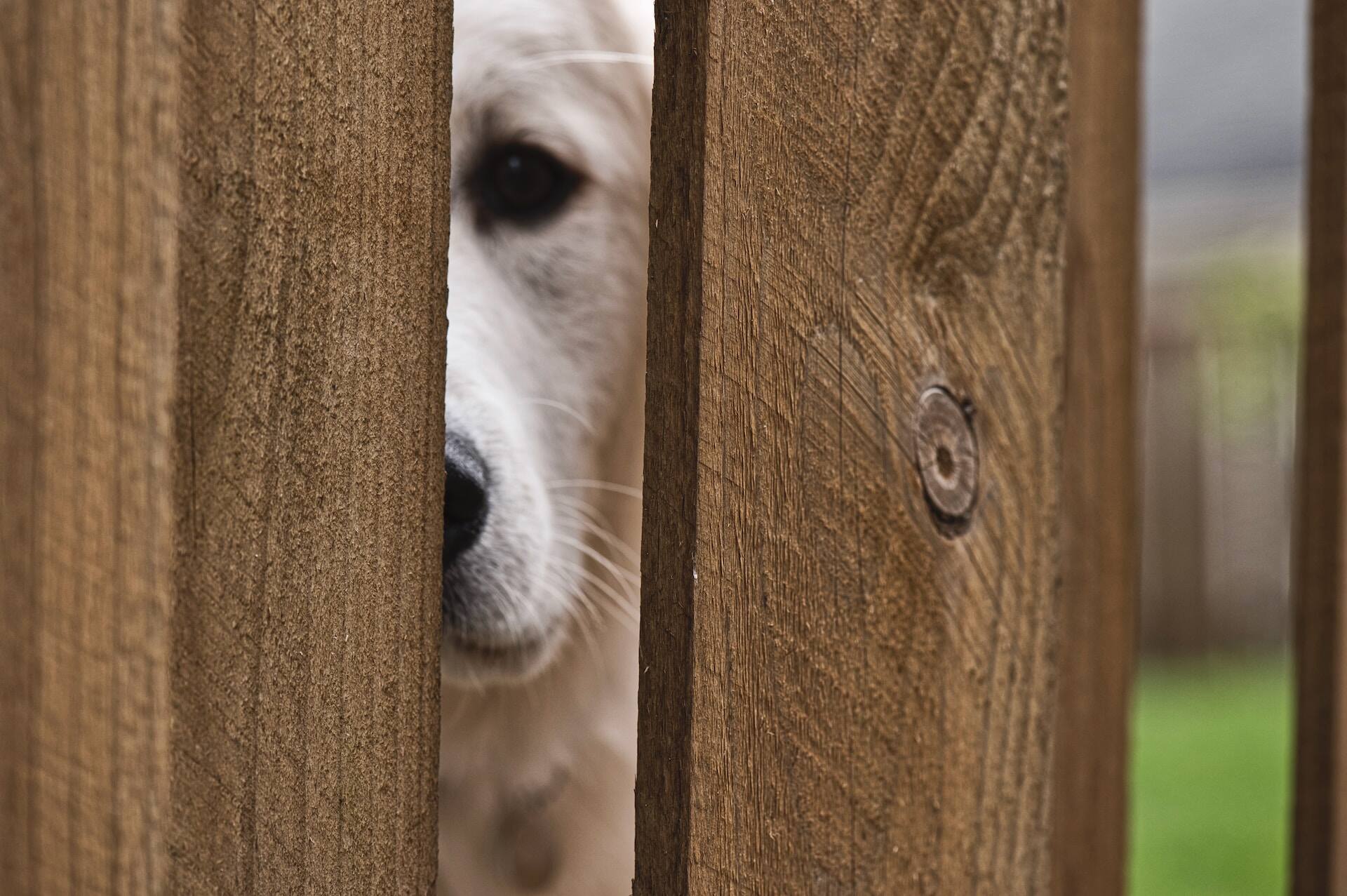
Read more: GPS vs Radio Frequency Pet Tracker: How Do They Compare?
Wireless dog fence
Wireless dog fences also use radio signals to create a boundary, but don’t use wires to draw a boundary. Instead, it creates a “circle” that expands out from a central point or transmitter. These are even easier to set up than underground dog fences.
At the same time, wireless dog fences so require dog training. They’re generally not suited for yards larger than three quarters of an acre. (Or around 3000 square meters.)
How much does an invisible dog fence cost?
In the US, invisible dog fences can cost anywhere from $200 to $2,5003. The final cost depends on factors like the size of your backyard, type of fence, number of dogs, terrain type, and whether you need to pay for a professional dog trainer.
And finally for the safe, smart, affordable option…
GPS dog fence
A GPS-powered, virtual dog fence is a great, safe (and humane) alternative to an electric dog fence. Let’s take a look at how this works with a Tractive GPS Virtual Fence.
With a Virtual Fence, there’s no need for a physical or electric barrier, nor a physical fence that takes up lots of space in your property.
Instead, you’ll simply get an escape alert once your dog leaves a “safe zone” – like your yard – and when they’re back home.
What’s better, you can follow their every step in real-time with Tractive GPS. So even if they break out, you can see where they’re off to, and bring them back home if needed. In other words, goodbye to worrying about how to find a lost dog!
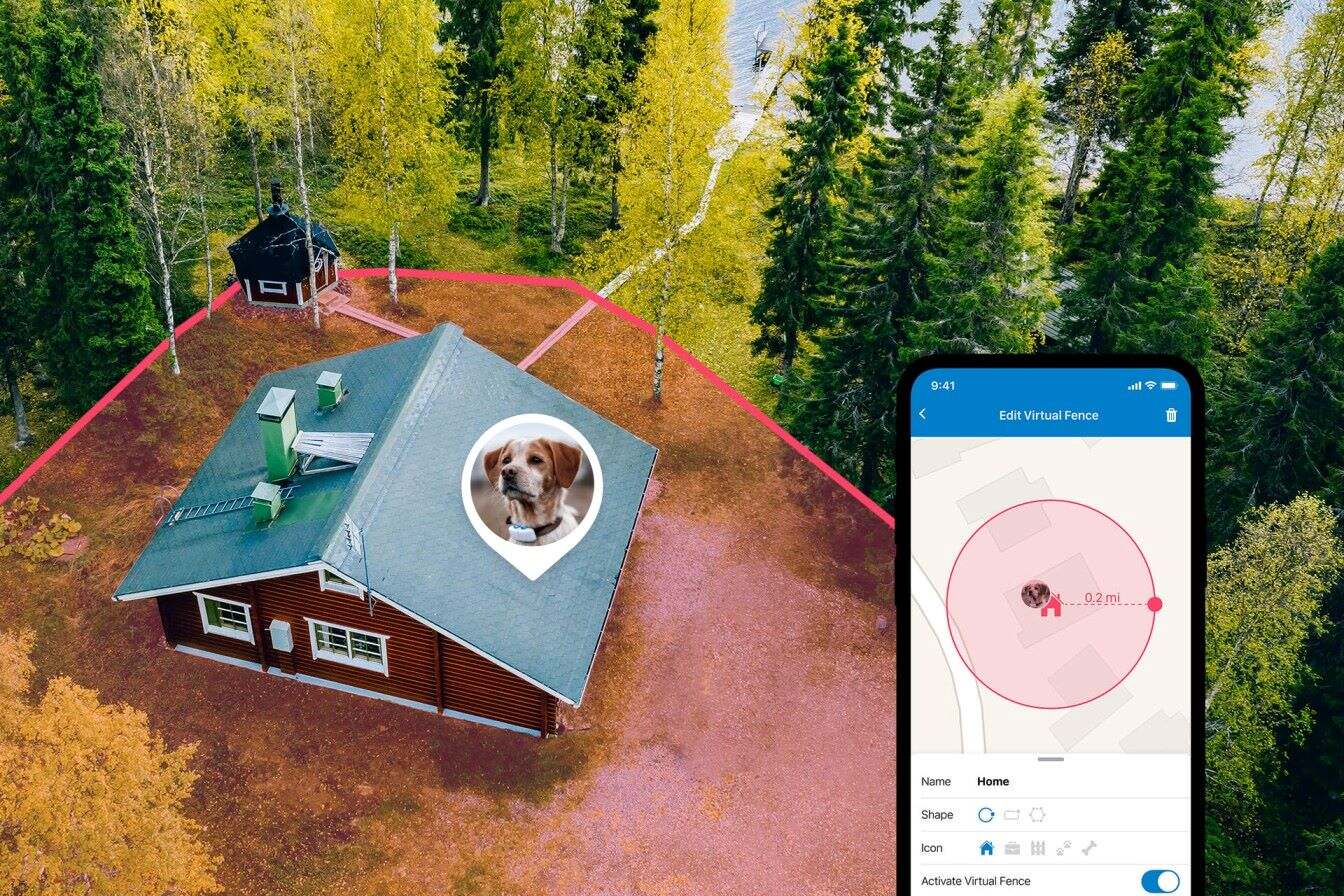
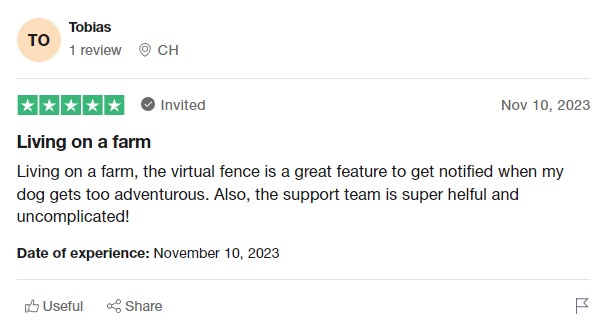
And here are a couple of extra perks you’ll find with a Tractive GPS Virtual Fence:
- A one-time upfront cost – and ongoing costs priced less than your monthly Netflix subscription
- Less than 5 minutes of setup time
- Set up to 5 customizable fences – for lawns and backyards of every shape and size

Most importantly, the Tractive GPS Virtual fence is a vet-friendly and pet-friendly option with zero shocks. So with just a glance at your phone, you can prevent your buddy from jumping the fence or escaping from home – every time.
Temporary dog fence
For many pet parents, a temporary dog fence might be all that’s necessary. If you don’t want to opt for a permanent, more expensive or time-consuming fence project, here are a couple of options for you:
- Portable dog fence: Even Amazon sells small portable dog fences these days – you can simply move them about as you need to.
- DIY temporary dog fence: You can use many of the materials mentioned so far to make a fence to suit your needs, then take it down when you don’t need it anymore.

Indoor dog fence
If you just need a dog gate or pet barrier indoors, there are several options:
- Baby gate: Store-bought baby gates will fit most door frames inside your home and give you the option to open and close the gate as necessary. This option might make the most sense for you if you need to keep your dog outside of a certain area of your house.
- DIY indoor pet barrier: You can also try making a custom dog gate with just a few supplies from your local hardware store. Some materials to consider for your DIY indoor pet barrier: recycled wood, plexiglass, spring rods, PVC pipes and fabric.
- Dog crate or playpen: You can buy these online for a simple, affordable solution for keeping your dog in place. But since they tend to be small and restrict your dog’s movement, don’t keep your dog confined to the crate or playpen for too long.

⚠️Keeping your dog indoors for too long might not be ideal for them in the long run.
Besides missing out on the exercise and sensory stimulation, your dog might get bored, stressed out, or anxious. Which can result in them acting out – barking excessively, chewing up or scratching household items, peeing everywhere…or making an escape attempt.
What type of fence is cheapest for dogs?
In general, your overall costs for installing a physical fence will depend on how many meters of fence you’re looking to install. (So the overall perimeter of your house and backyard.) But in general, here are a couple of dog fence ideas on the more affordable side:
- PVC deer block netting
- Metal wire fences, such as chain link
- Poultry netting
- Wood pallet fences
Keep in mind, however, that inexpensive dog fences may not be the most durable choice in the long run. So if you do decide to opt for a cheaper dog fence:
- Get your dog microchipped at the very least. A microchip is a permanent ID tag for your dog. It can help a vet or local shelter identify you as the rightful owner in case your dog goes missing.
- Use a GPS dog tracker on your dog’s collar as a backup safety precaution. So you’ll be able to track down your dog in real-time in case they escape – or get stolen.
⚠️ Even a physical fence might not keep your dog 100% safe from pet thieves – i.e., dognappers. Which is where tracking their position in real-time can potentially save their lives.
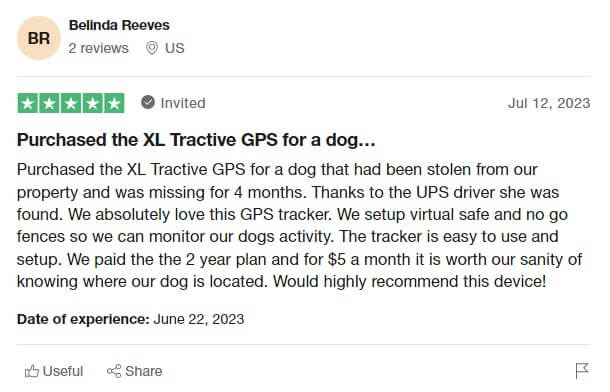
How to keep a dog from digging under fence
No matter which type of dog fence you go for, you may still have a bold escape artist on your hands who will do whatever they can do get out of the fence. Including digging out under it.
Digging is, after all, part of a dog’s nature. To discourage your dog from digging under the fence, try these tips:
- Bury chicken wire under the fence, at least 1 foot of it. You can install horizontally or vertically, but just make sure that the ends of the chicken wire face downwards. Cover the chicken wire with soil or grass so it doesn’t stand out in your yard.
- Use heavy stones or bounders as a barrier at the bottom of the fence.
- Monitor your dog in the yard – as soon as they start digging, blow a whistle or otherwise make a noise to discourage them from their activity. Redirect their attention to somewhere they’re allowed to dig, such as a sandpit. Reward them with treats for good behavior.
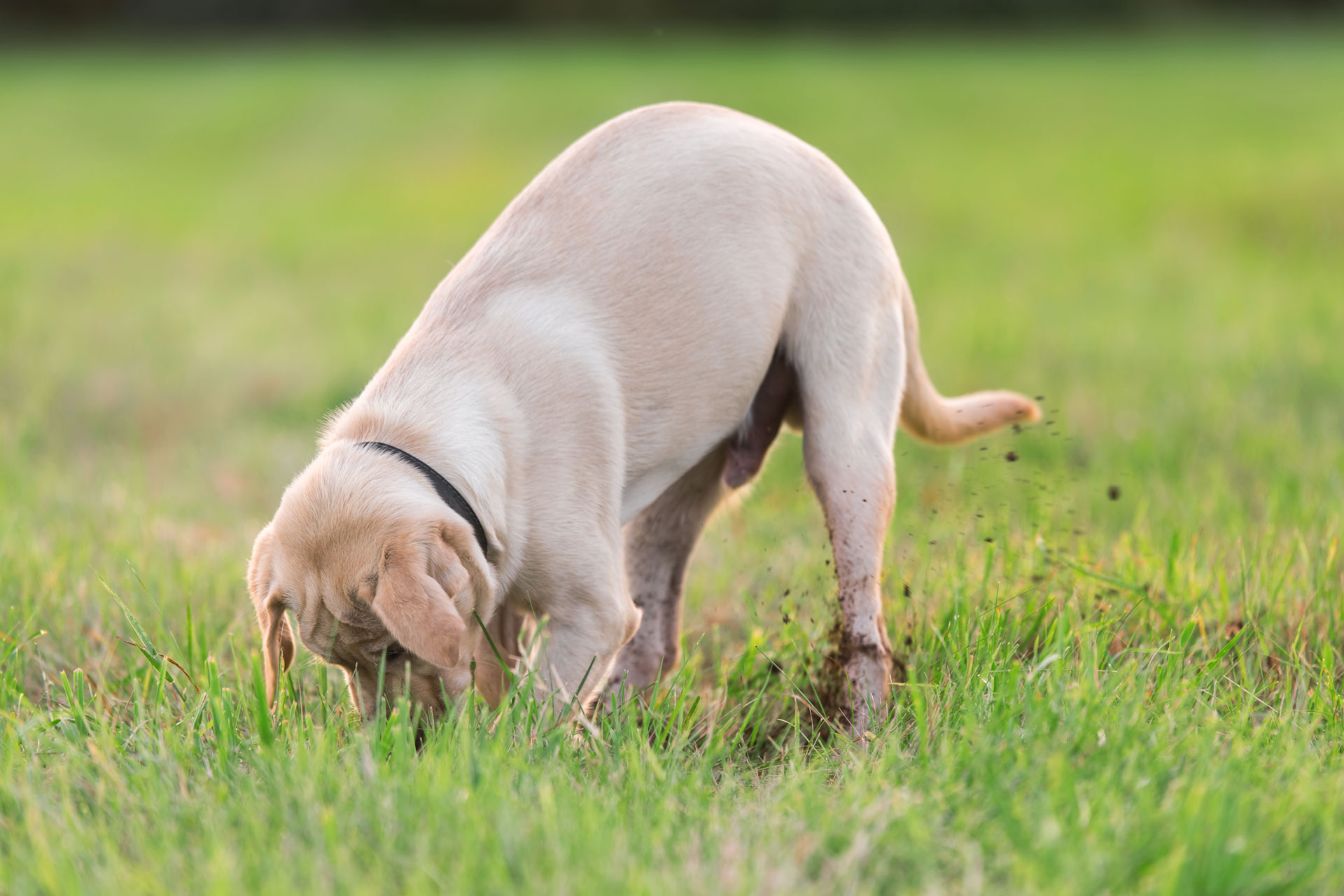
- Consider changing to a different type of fence if necessary. For example, switching from a see-through fence to one your dog can’t see through may help decrease doggo digging.
- Make sure they get plenty of exercise before putting your dog in a fenced area. Walking, running, or playing off that excess energy will make them less likely to dig under the fence.
💡Your Tractive GPS comes equipped with Activity Monitoring – i.e., a built-in motion detector that tracks your dog’s active minutes per day. So with just a glance at your phone, you can make sure your buddy is getting enough exercise every day. (Aka, too tired to dig a hole in your azaleas.)
How to keep your dog from jumping a fence
Another problem some dog parents have after installing a fence is that their dog jumps over it! This is obviously not ideal, so make sure you choose a fence that’s tall enough in the first place.
Dogs might jump over the fence if they’re bored, if their prey drive is strong, or they’re looking for a mate. So how to handle a dog jumping over the fence?
- Restrict their view – dogs who can’t see beyond the fence are often less likely to jump over it.
- Check for any jumping aids, and eliminate or move them as necessary. This means removing items your dog might be using to help them jump over the fence, like a trash can.
- Try using a coyote roller – a bar at the top of the fence which will roll in case a dog or coyote tries to climb over it and make them lose their grip.
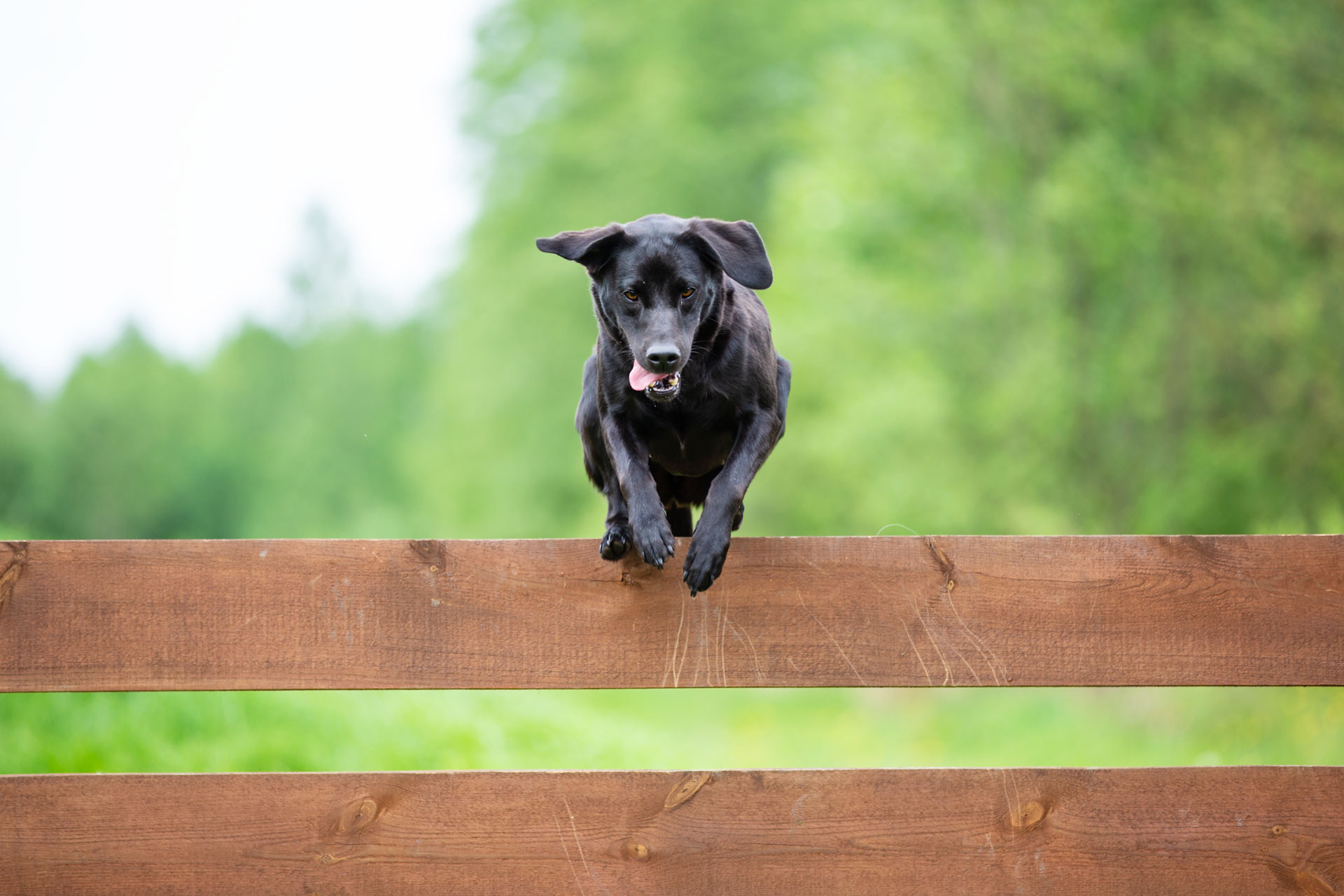
- Use a post extender, or L-footer at the top of the fence.
- Consider planting trees or bushes in front of the fence.
- Supervise your dog and discourage any jumping while in the yard. Redirect their attention to a positive activity and reward them for doing that.
- Make the yard more interesting for your dog. Play and hang out with them, hide treats throughout the yard, use a puzzle feeder, or plant some dog-friendly scents around the yard. You can even buy synthetic fox or coyote urine scents online – it might make you go “eww”, but they are great for distracting dogs!
And finally…
Plan ahead for your dog jumping over the fence anyway – now we’re talking emergency measures. (Dog fence ideas aside.) With a GPS tracker attached to your buddy’s collar, you can:
- Immediately live track where your dog’s running off with just a glance at your phone.
- Or intervene if you get an escape alert that they’ve jumped past your backyard fence (aka, the safe zone.)
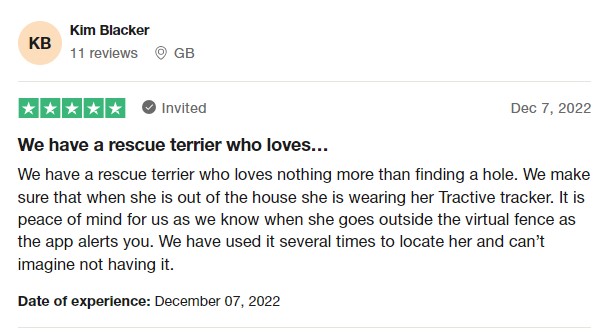
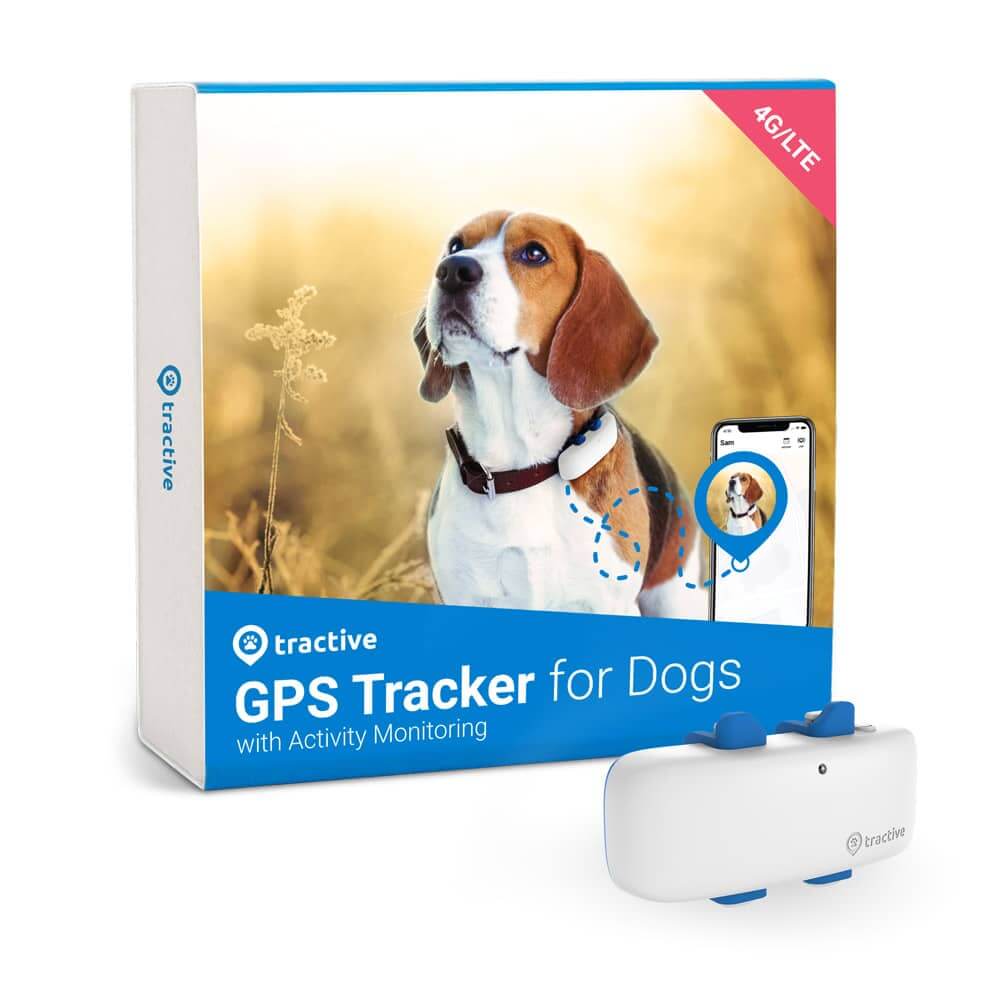
Always know where your dog is
Follow every step in real-time with unlimited range. Get alerts if they wander too far. Keep them happy & healthy with Wellness Monitoring. And let others – like walkers or sitters – keep an eye on your dog too.
So there you have it, 15 dog fence ideas to keep your canine companion safely secured inside your home or yard. But if you’re looking for some more tips, here are a couple from the pros at Bekaert Fencing:
And if you’ve liked this post, share it with a friend or a loved one – and let’s help build a safer, kinder world for our furry friends together.




